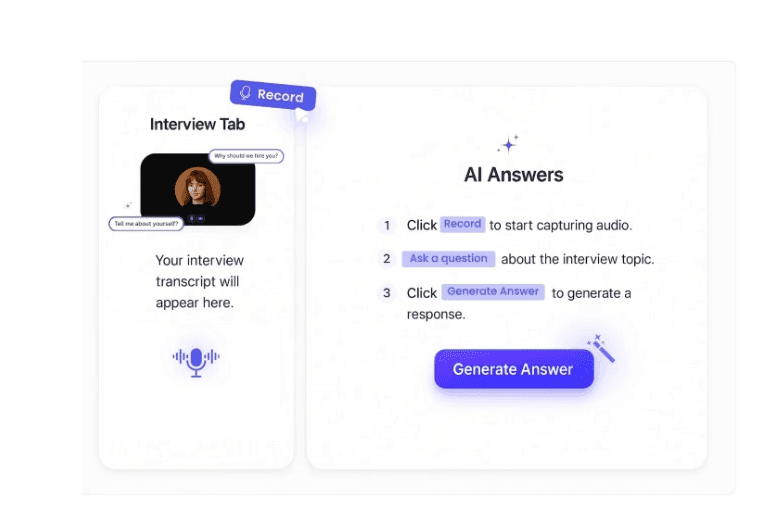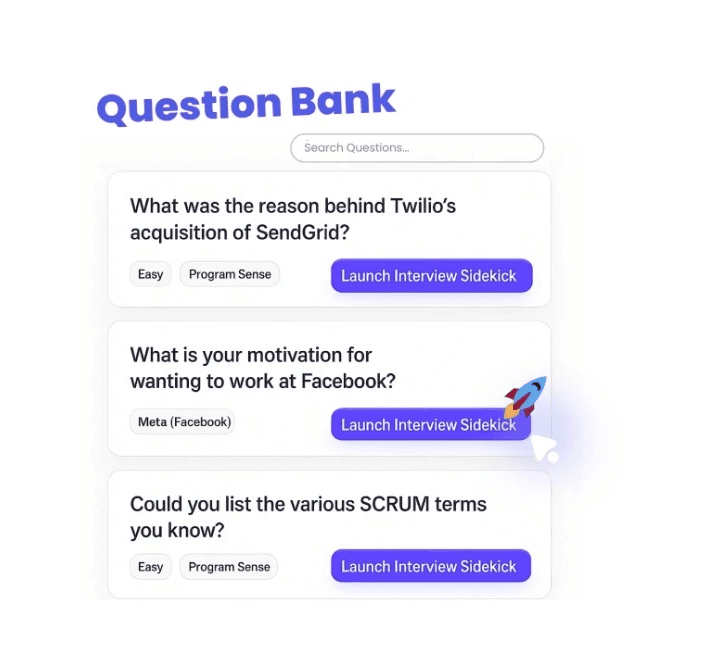Release Engineer Interview Preparation (Step-by-Step Guide with Examples)
A Release Engineer plays a vital role in ensuring the software is packaged, tested, and deployed to production in a consistent, automated manner. They manage the release cycle from development to production, ensuring smooth transitions and minimizing downtime. This guide will help you prepare for your Release Engineer interview by covering essential tools, practices, and concepts in release management.
Overcoming Common Interview Prep Pain Points
Complex Release Pipelines: Release Engineers often face the challenge of managing complex release pipelines across various environments (development, staging, production).
Automating Releases: Automating the release process and ensuring smooth, error-free deployments can be difficult, especially when managing dependencies and versions.
Troubleshooting Failures: When something goes wrong in the release process, quickly identifying and fixing the problem is crucial.
Version Control: Managing versioning, branching, and ensuring that the right version is released to the correct environment is key to maintaining stability.
Continuous Delivery vs. Release Management: Distinguishing between CD and traditional release management and understanding the integration of both practices.
Your 4-Week Preparation Roadmap
A structured, week-by-week plan can help you stay focused and organized as you prepare for your Release Engineer interview. Below is a suggested 4-week preparation timeline:
Week 1: Basics of Release Engineering
Focus: Understand the basic concepts of release engineering and the software development lifecycle.
Daily Goals:
Day 1: Study the role of a Release Engineer within the software development lifecycle.
Day 2: Understand version control systems (e.g., Git) and their role in release management.
Day 3: Learn the fundamentals of build automation and how tools like Jenkins, TeamCity, or Bamboo are used for continuous integration.
Day 4: Explore common versioning strategies (e.g., Semantic Versioning) and the importance of release notes.
Day 5: Study deployment strategies and their impact on release engineering (e.g., rolling updates, blue-green deployments).
Day 6: Learn about release automation tools such as Spinnaker, Octopus Deploy, or GitLab CI for automating release management.
Day 7: Get hands-on with Git, learn basic commands, and explore branching and merging techniques.
Tip: Set up a simple Jenkins pipeline to automate building and deploying a basic project.
Week 2: Release Automation and Tools
Focus: Learn about the tools and technologies that automate the release process and ensure smooth deployments.
Daily Goals:
Day 1: Study Jenkins in-depth, learn how to configure Jenkins pipelines for automating releases.
Day 2: Learn about Build and Release Management tools such as Octopus Deploy, TeamCity, or Bamboo.
Day 3: Understand how to work with configuration management tools (e.g., Ansible, Chef, Puppet) to automate infrastructure provisioning.
Day 4: Explore containerization with Docker and orchestration with Kubernetes to deploy applications.
Day 5: Learn how to manage dependencies and ensure consistent builds across environments.
Day 6: Study rollback strategies and how to implement automated rollbacks during failed deployments.
Day 7: Explore the concept of canary releases and feature toggling for smoother releases.
Tip: Experiment with Docker and Kubernetes to deploy and scale a sample application, and automate the process using Jenkins.
Week 3: Advanced Release Engineering Concepts
Focus: Delve into more complex aspects of release engineering and best practices for automating and optimizing the release process.
Daily Goals:
Day 1: Study continuous delivery (CD) and the differences between CD and traditional release management.
Day 2: Understand deployment pipelines in a microservices architecture and how they affect release engineering.
Day 3: Learn about maintaining consistency across environments (e.g., dev, staging, production) and the importance of configuration management.
Day 4: Study monitoring and alerting for releases, including tools like Prometheus, Grafana, and New Relic.
Day 5: Learn about release branching strategies, and how to ensure the right features get deployed.
Day 6: Explore the concept of “release gates”—automated quality checks before allowing a release to go live.
Day 7: Understand how release management impacts team collaboration and communication with QA, development, and operations.
Tip: Practice setting up a CI/CD pipeline that automates deployments across multiple environments (dev, staging, production).
Week 4: Mock Interviews and Real-World Scenarios
Focus: Put everything together and prepare for scenario-based questions and mock interviews.
Daily Goals:
Day 1: Study real-world release management case studies, particularly in large-scale applications.
Day 2: Prepare for scenario-based questions, such as designing a release management process for a microservices environment.
Day 3: Practice troubleshooting common release issues like failed deployments, rollback errors, or build failures.
Day 4: Participate in mock technical interviews with a focus on release engineering questions and scenarios.
Day 5: Review key tools and technologies you’ve learned throughout your preparation, including Jenkins, Docker, Kubernetes, and configuration management tools.
Day 6: Study how to optimize the release process to ensure faster and more reliable deployments.
Day 7: Relax, review any weak areas, and review your progress before your interview.
Tip: Make use of mock interviews or peer reviews to gain feedback and refine your answers.
Bringing It All Together
By following this roadmap, you’ll gain a comprehensive understanding of release engineering and the tools that make automated, reliable software releases possible. Here are a few additional tips for success:
Hands-On Experience: Set up real-world environments and use the tools to gain practical experience with release automation, versioning, and deployment.
Focus on Automation: The key to success in release engineering is automation. Automate everything from builds to deployments to rollback strategies.
Continuous Improvement: Constantly monitor your release pipeline for areas of improvement, and strive to make the process faster and more reliable.
Stay Current with Tools: New tools and practices emerge in release engineering, so stay up-to-date on the latest technologies.
By mastering these concepts and tools, you’ll be well-prepared to ace your Release Engineer interview and build a successful career in release management. Good luck!









